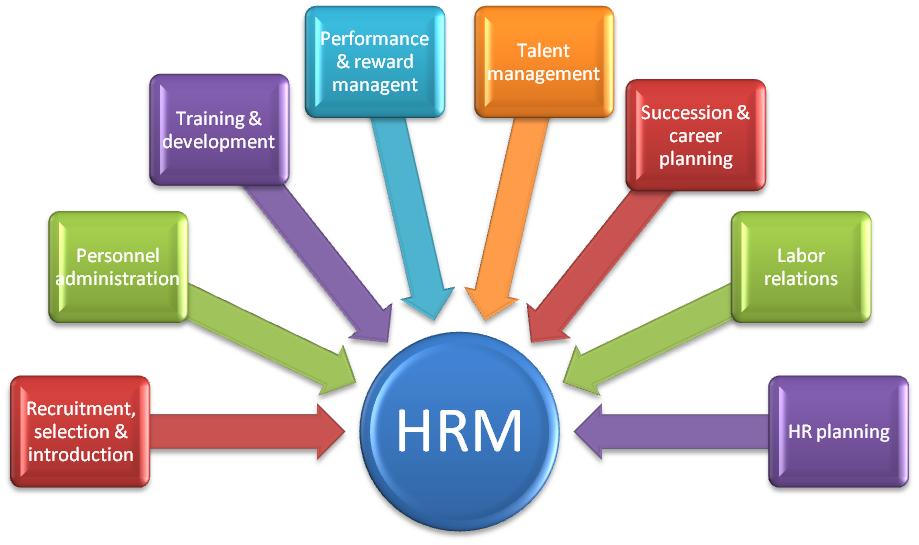1) Human Resource Management – HRM = management function that helps managers to recruit, train and develop the people in the organization
2) Job Analysis = Find out relevant facts about the job to perform duties properly
3) 360 degree appraisal = appraisal done by peers, subordinates and superiors to provide feedback of the performance
4) Profit Sharing = sharing of company’s profits/stocks benefitting the employer and employee (win-win situation)
5) Job design = deciding the contents of the job i.e. duties, tasks, responsibilities, methods
6) Job rotation = moving employees from one job to another to reduce monotony and boredom in work/job
7) HRIS = Human Resource Information System, a computerized system (part of MIS) to manage human resources in an organization
8) Fair wages = equal pay for equal work i.e. wage payment to be fair to all workers to enjoy higher standard of living
9) Quality circles = small group of employees who discuss on quality improvement and cost control, technique of participative management
10) VRS – Voluntary Retirement Scheme = reduction of surplus employees whose marginal productivity is zero in the organization
11) Induction = planned introduction of the employee to the job, co-workers and the organization to make the employees feel at home
12) Wages and salaries = wages paid to workers, salaries to employees. It is the hourly, weekly or monthly pay that an employee receives for work in the organization
13) Personnel manual = set of personnel policies providing guidelines for taking actions and making decisions to attain organizational objectives
14) Application blank = prescribed printed form to be filled by the candidates in their own handwriting
15) Incentives = addition to regular wages which are provided to employees to motivate them and increase their productivity (monetary and non-monetary)
16) ESOPs – Employee Stock Ownership Plans = employee benefit plan providing stock to the employees of the company at concessional rate
17) Placement = placing the person in a particular department of the organization i.e. placing the right person for the right job
18) Assessment centres = central locations where managers participate in job related exercises evaluated by trained observers
19) Downsizing = termination of employees for certain reasons and methods are retrenchment, layoff, VRS
20) Commission = fee for the services rendered which is calculated as a percentage on total sales
21) Selection = choosing the most suitable candidate out of those who are interested and qualified for job
22) Transfers = horizontal movement of employees which does not change the status, responsibility, salary
23) Career planning = help employees to select his career goals and integrate employee and organizational goals
24) Industrial relations = develop relations between the employer, employees and trade unions
25) External forces influencing HRM = political, cultural, economic and technology factors
26) Fringe benefits = extra benefits that an employee gets/receives
27) Personnel planning = human resource planning of the future requirements of the manpower of the organization
28) Employee empowerment = redistribution of power determining the human resources in an organization
29) Pink slip = termination letter used to fire employees by informing them that their services are no longer required
30) Moonlighting = employees pursue alternative jobs alongwith their current jobs to make some extra money
31) Lay-off = inability of the employer to provide employment to workers due to situations beyond control like natural calamity, shortage of power
32) Balance score card = adopted by companies to build better business process and align business activities to the vision and strategy of the organization
🙂




66 Comments